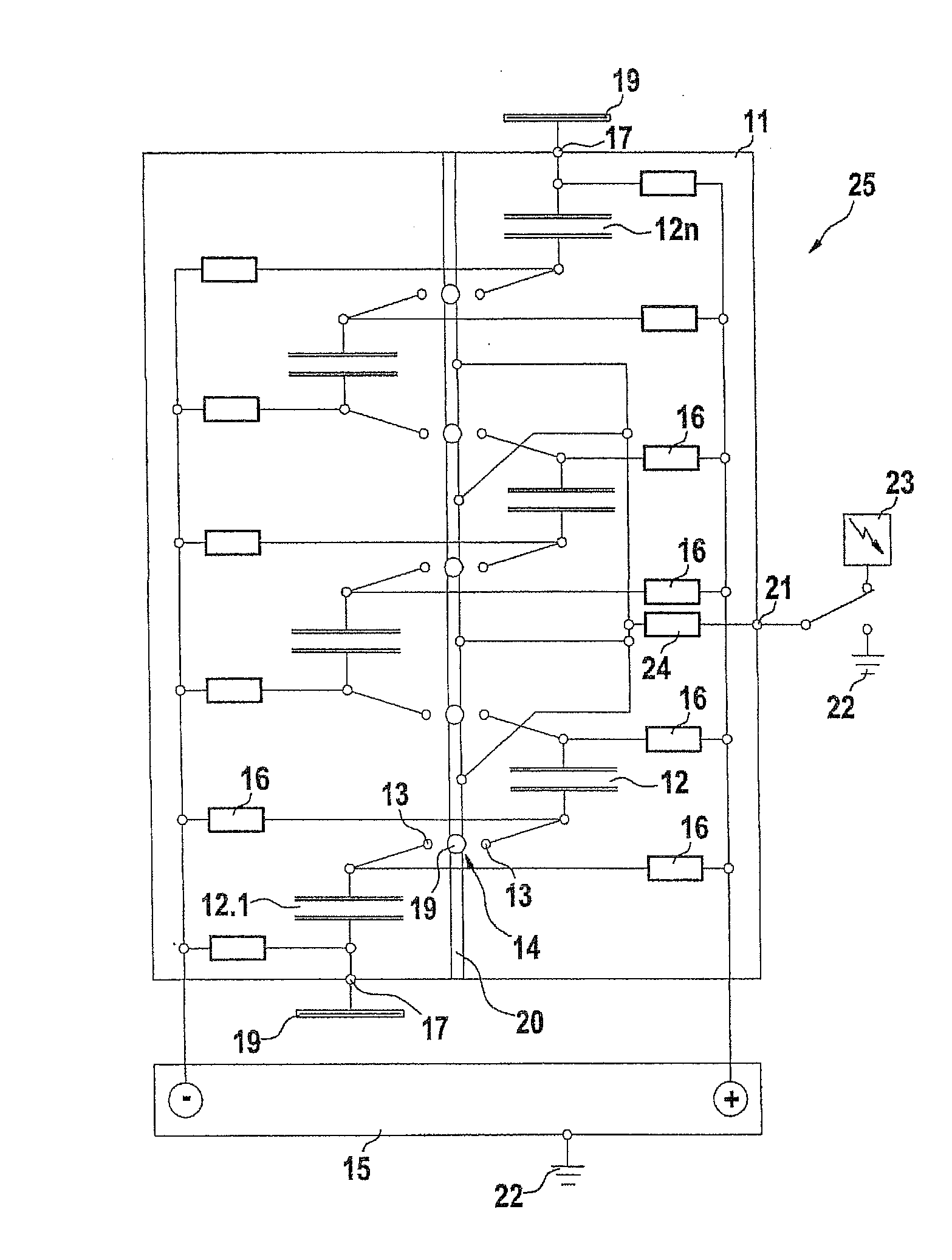Method and device for production and emission of a high-power microwave pulse
a high-power microwave and microwave pulse technology, applied in pulse generators, pulse techniques, instruments, etc., can solve the problems of reducing the space required for hardware to about two thirds of that previously required, and avoiding complexity, so as to speed up the process of discharging the series circuit, improve the radio-frequency oscillation response, and reduce the charging resistance
- Summary
- Abstract
- Description
- Claims
- Application Information
AI Technical Summary
Benefits of technology
Problems solved by technology
Method used
Image
Examples
Embodiment Construction
[0014]The Marx pulsed-voltage generator which is referred to in the following text here for the sake of simplicity as a Marx generator 11, has a column comprising n relatively large-volume capacitors 12 (12.1 to 12.n), which, in the interest of high-density design are stacked, as shown in the sketch, offset laterally with a gap in a zigzag form to form a short column. A high-voltage switch, in the form of the two electrodes 13-13, which must be oriented with respect to one another, of a spark gap 14 is connected in series with in each case two mutually associated capacitors 12-12.
[0015]The capacitors 12 are each charged in parallel from a direct-current charging circuit 15 with a preferably bipolar high voltage in the order of magnitude of several tens of kilovolt, with a charging current in the order of magnitude of one milliampere. Each capacitor 12 is preceded by a respective decoupling resistor 16 in each of its two charging paths, preventing short-circuits via these charging pa...
PUM
 Login to View More
Login to View More Abstract
Description
Claims
Application Information
 Login to View More
Login to View More - R&D
- Intellectual Property
- Life Sciences
- Materials
- Tech Scout
- Unparalleled Data Quality
- Higher Quality Content
- 60% Fewer Hallucinations
Browse by: Latest US Patents, China's latest patents, Technical Efficacy Thesaurus, Application Domain, Technology Topic, Popular Technical Reports.
© 2025 PatSnap. All rights reserved.Legal|Privacy policy|Modern Slavery Act Transparency Statement|Sitemap|About US| Contact US: help@patsnap.com


